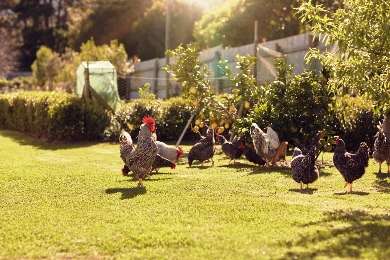Re-designing urban food gardens to deliver maximum benefit

Ever wondered why growing food at home never seems to save you any money?
Two researchers, Dr James Ward (University of South Australia) and Dr John Symons (Victoria University) think they may have the answer, and it lies in mathematics.
Their work, published in the free open access journal Horticulturae, uses a mathematical optimisation technique called 'linear programming' to design urban food gardens that deliver the maximum cost-saving to households.
"Growing food at home used to be something people did to be thrifty," says Dr Ward, lead researcher on the project, "but these days it's become more of a trendy thing that's only done by people who have enough disposable income."
One of the biggest recent changes to garden affordability is the rising price of water.
And anyone who has tried to grow any reasonable amount of food at home knows that fruit and vegetables are thirsty.
"In Hobart, you can still get water for around a dollar per kilolitre," Dr Symons says.
"That's enough to irrigate, maybe two square metres of productive veggies for a whole year.
"But in a water-scarce city like Melbourne or Adelaide you're paying more than three times that amount.
"If you're not careful you could easily spend more on the water than the value of the food you grow."
And it's not just the cost of water that changes.
"In dry cities you've got a double-whammy – the dry climate means plants need more water, and that water costs an arm and a leg," Dr Ward says.
Their approach uses a model previously developed by Ward, called LUDO – Land Use Dietary Optimisation – that first simulates the food products needed to deliver a balanced diet for minimum cost and then selects which foods could be strategically grown at home to further reduce the food bill.
"The results are really interesting. It all comes down to your garden size," Dr Symons says.
"With a small garden the model lets you be really selective, choosing just high-value niche crops like strawberries, basil, tomatoes."
Interestingly the model also includes free-range chicken eggs, which the researchers claim can deliver high-value food while requiring almost no water.
"The bigger your garden, the more you'll have to fill it up with lower-value crops because, let's face it, you can only eat so much basil and strawberries," Dr Ward says.
"So naturally, profitability per square metre goes down as garden size goes up.
"But still, we see up to about 40 square metres per person, even in a dry city like Adelaide, with the right crops you should be able to return a profit – that's after the cost of irrigation and fertiliser, chook feed – of around $30 per square metre."
In other words, a medium-sized, well-designed garden could potentially deliver annual food savings of over $1,000 per person.
Now that's food for thought.
Asked what will happen with the work from here, Ward and Symons say that the software lends itself to a garden design app. Any enthusiastic app developers are encouraged to contact them.
More information: James Ward et al. Optimising Crop Selection for Small Urban Food Gardens in Dry Climates, Horticulturae (2017). DOI: 10.3390/horticulturae3020033
Provided by University of South Australia
















